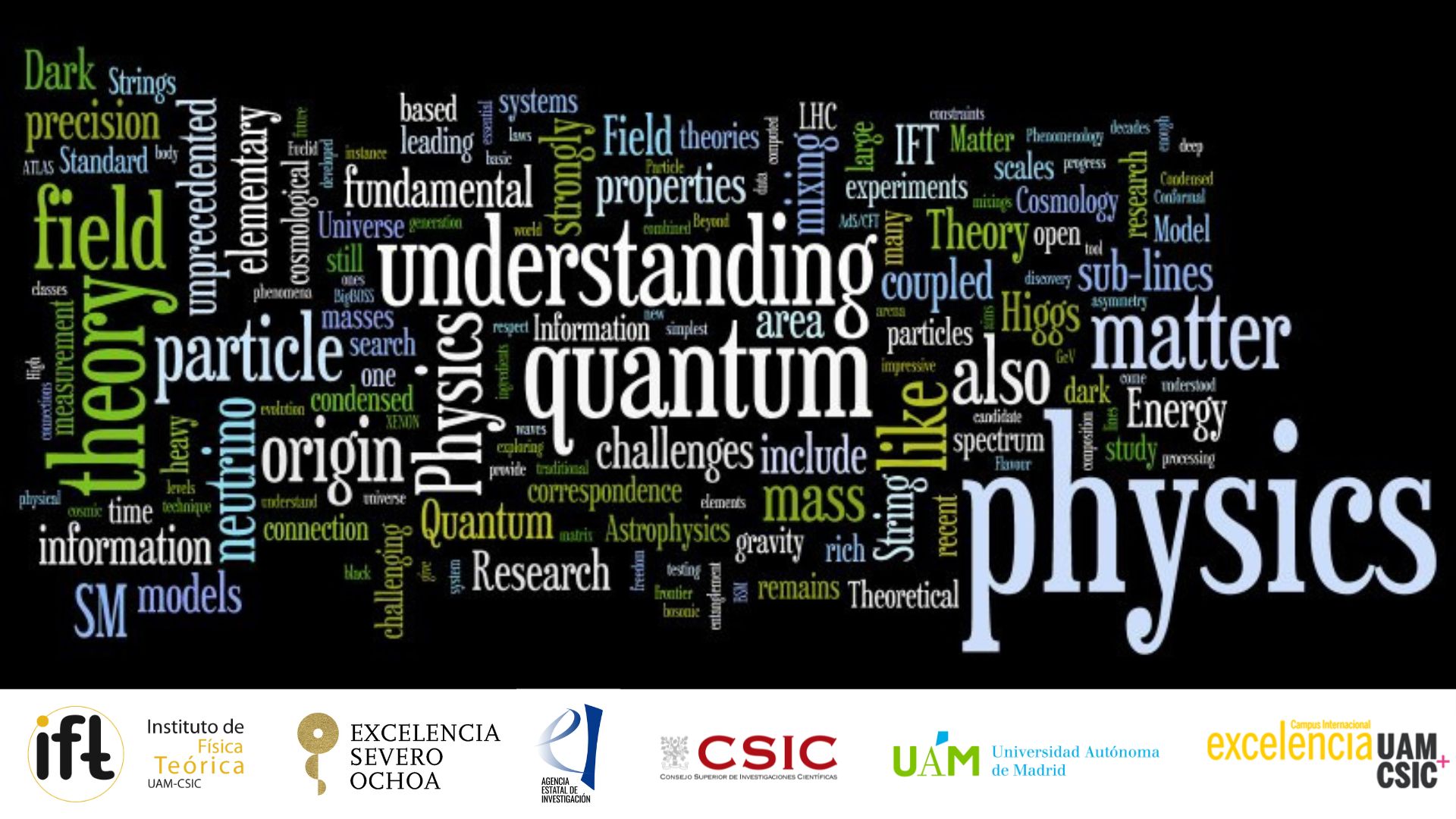Centro de Excelencia Severo Ochoa
Menú
Buscar

Blue Room
The first part of the thesis is devoted to the study of quadratic (in curvature) theories of gravity when treated in the First Order formalism. These renormalizable theories are quadratic in the derivatives of the connection and do not contain quartic propagators, leaving a priori some room for unitarity. Nevertheless, it is not clear whether these theories include a graviton or whether they are free of ghosts, as all the dynamics is now encoded in the connection field. We analyze the spin content of a generic torsion-free connection by constructing a complete basis of 22 six index spin projectors. In the second part of the thesis, we investigate the (in)equivalence of conformal and Weyl invariant theories for the gravitational field. The most general Lagrangian for spin two particles up to dimension six operators is explored, corresponding to the low-energy expansion of linear and quadratic (in curvature) theories of gravity. We carry out a full classification of the theories invariant under linearized (transverse) diffeomorphisms, linearized Weyl transformations, and the usual conformal and scale symmetries. In the last part of the thesis, the theory of Unimodular Gravity (UG) is examined. This theory is an alternative low-energy description of gravity defined as the truncation of GR to unit determinant metrics. Apart from the character of the CC, UG is found to be classically equivalent to GR, and the question of the full (in)equivalence of both theories is still an open debate when quantum corrections are considered. The potential differences arising when studying the coupling to matter are investigated, via the introduction of a non-minimally coupled scalar field. We compute all the one-loop divergences in both theories and find a physical combination of couplings whose running differs for intermediate values of the non-minimal coupling.
Social media